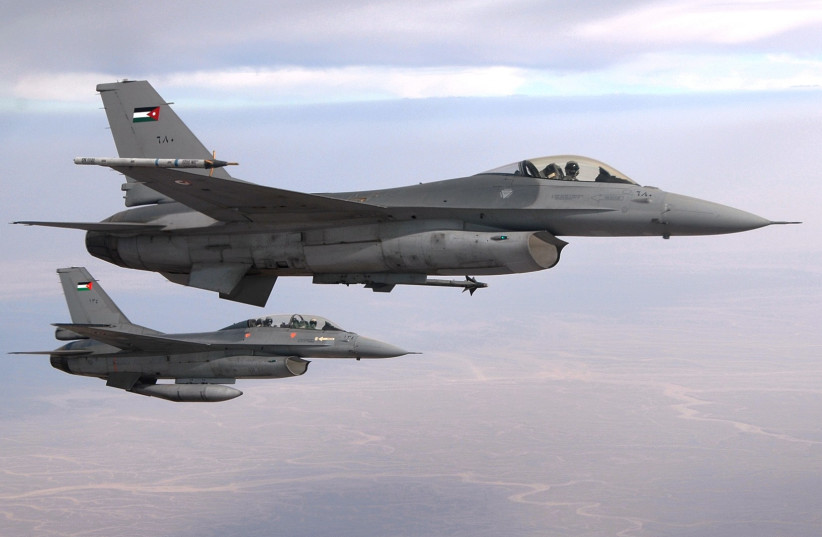The shooting down of hundreds of drones, cruise, and ballistic missiles from Iran in the early hours of April 14 shows that an important element of the October 7 grand strategy against Israel failed: the regional alliance against the Islamic Republic did not crumble.
It is unclear how much, if any, foreknowledge Iran had of Hamas’ plans for its horrific Simchat Torah attack, but one thing is certain: the ayatollahs saw it as a golden opportunity to break up the growing alliance between Israel and moderate Sunni countries in the region.
That alliance was forged not out of any sudden epiphany among the Sunni states that Israel had a legitimate right to exist in the region, but rather out of a common fear of Iran and an understanding that only by working together with Israel can this moderate camp beat back Iran’s hegemonic Mideast designs.
It was not the love of Tel Aviv that the United Arab Emirates, Bahrain, Jordan, Egypt, Morocco, and -- unofficially -- Saudi Arabia together with Israel, but rather a fear and hatred of Tehran. The presence of Israel in the region might be an annoyance for those countries, but the ideology of the leaders in Iran was an existential threat.
Alliance forged by shared challenge
Out of that threat, cooperation -- including close security cooperation -- was born.

First through the Abraham Accords in 2020, a ball that began rolling after the moderate Gulf countries saw the seriousness with which Israel took the Iranian nuclear threat -- even willing, under the Obama Administration -- to go toe-to-toe with the US president over the issue.
Then, after the Abraham Accords, the next country that seemed on the verge of normalizing its already existing but under-the-table ties with Israel was Saudi Arabia, something that – last summer – was gaining significant momentum.
Then October 7 hit.
Hamas believed that with that strike, they placed the Palestinian issue squarely back on the international agenda, and the Iranians believed that this attack -- and what they knew would be a fierce Israeli response -- would scuttle any formal Saudi-Israel pact and would deliver a death blow to the Abraham Accords.
How, they thought, could this alliance continue to exist and even grow with the inevitable anger in the Arab and Muslim world over Israel’s war in Gaza and its toll on Palestinian lives?
As the war ground on, as the pictures coming from Gaza -- broadcast 24/7 in the most grisly way possible by Hamas’ Qatar-sponsored Al-Jazeera propaganda arm -- the ayatollahs were rubbing their hands in glee thinking that now any Israeli-Saudi normalization, as well as any new regional defense architecture in formation to fend off their designs, were dead in the water.
The response early Sunday morning to Iran’s massive assault showed, however, that this was not the case. The defensive capabilities built up quietly over the last number of years precisely worked for this eventuality. Israel, together with regional allies whose names are not being revealed publicly but whom everyone can imagine, assisted Israel in knocking Iran’s drones and missiles out of the skies.
Iran had hoped October 7 would destroy the regional alliance against it being formed with Israel, but the dramatic events in the Middle Eastern skies on April 14 proved that those hopes were in vain.
Not only that, but Iran’s decision to attack from its territory has now shifted the conversation from the Palestinians to their own capabilities, with the world now wondering what would have happened if Iran had nuclear capabilities.
The surreal Iranian attack Saturday night -- there is no other way to describe a night where an entire country is holding its breath wondering where exactly the projectiles will land, which it knows is heading in its direction -- gave proof that the war in Gaza did not scuttle the new regional alliance.
Jordanian, Saudi, and Emirati fear of Iran is greater than their anger at Israel for the war in Gaza (especially since the rulers in those countries secretly hope that Israel finishes off Hamas).
The Iranian attack did something else as well: It relieved Israel's isolation. At a time when tensions with Washington were at a fever pitch, when US President Joe Biden publicly was blasting Prime Minister Benjamin Netanyahu and Israeli policies - Giving a green light to Israel’s other allies, like Britain and France, to do the same -- These countries, especially the US, Came to Israel's assistance and helped intercept the Iranian drones and missiles.
A few weeks back, the Economist magazine ran a much-discussed dreary photo on its front page of an Israeli flag flying in what appears to be a dusty wind under the ominous two-word headline: “Israel alone.”
The response late Saturday night and early Sunday morning from Israel’s allies -- both regional and further afield -- shows that the headline was, thankfully, way off the mark.
